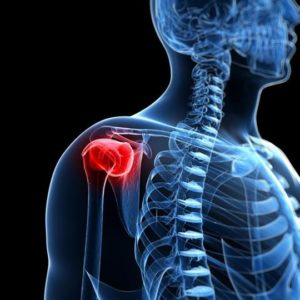
Introduction:
Frozen shoulder is known as adhesive capsulitis. This condition is characterized by pain and stiffness in shoulder joint, restricting the
. Signs and symptoms typically start appearing gradually, worsen over time, and then resolve usually within one to three years.
But, homeopathy can provide excellent treatment in case of frozen shoulder. We at DR MANKAD’S HOMOEO CLCINIC always put our best efforts to successfully treat the cases of frozen shoulder from every possible aspect, following individualistic approach based upon symptom similarity and constitution.
Frozen shoulder and homoeopathy:
Homeopathic medicines:
Calc phos, ruta, rhus tox, causticum, kalmia, bryonia, arnica, colchicum, medorrhinum, ledum pal, calc carb. are well indicated homoeopathic remedies for the treatment of frozen shoulder.
But, only an appropriate homoeopathic medicine is administered to the patient after a detailed case taking on the basis of symptom similarity and characteristic individuality with a strong emphasis upon holistic approach.
Patient should certainly consult the homoeopath and initiate the treatment without any delay to obtain a great relief and thorough cure in short span.
Causes:
The cause of frozen shoulder is not fully known. But, in most of the people with frozen shoulder have suffered from immobility as a result of recent injury or the fracture.
Risk factors:
- Age: in people over 40 years of age
- Gender- 70% of people with frozen shoulder are women.
- Fracture of arm and due to that immobility causes the capsule of shoulder to stiffen.
- Diabetes- diabetic patients are more likely to develop it.
- Patients with hyperthyroidism, hypothyroidism, Parkinson’s disease, and certain heart disease.
Symptoms:
Frozen shoulder develops slowly and in three stages.
Each stage can last for a number of months.
- Freezing stage: any movement of the shoulder causes pain, and range of motion becomes limited. So this is sometimes referred as painful stage.
- Frozen stage: it is also known as adhesive stage.
Shoulder becomes stiff and use of it causes intense pain.
- Thawing stage: the range of motions of the shoulder begins to improve.
Diagnosis:
Diagnosis of this condition is based on signs and symptoms and physical examination, paying attention to the arm and shoulder.
Structural problems can only be ruled out with the help of X RAY and MRI.
General guidelines:
Physiotherapy can always work as conjunctive mode of treatment that excellently improves the condition of the patient.

